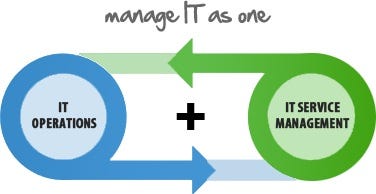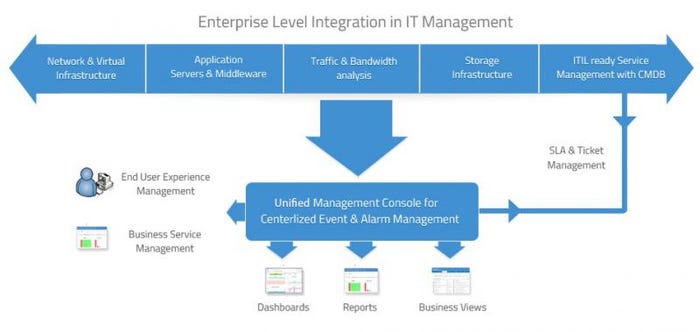The Need to Integrate IT Operations and IT Service Management
Integrating IT operations management and service management enables organizations to view and manage these entities as one, aligning your operations with your clients' needs
August 25, 2014

By ManageEngine GuestBlog 1
Outside of IT, none of your clients appreciates the distinction between IT operations management and IT service management. They only care about whether what you do helps them get their jobs done. That’s important because, to your clients, IT is a monolithic enterprise, a single service.
If the service they rely on starts to perform poorly and they call you, you can use your monitoring tools to identify the source of the problem. But if you then have to turn to a service management system to create and track a trouble ticket–if you have to manage technicians and other resources with yet another system–you lose the connection between the problem and the solution. You lose the ability to manage the entire service delivery ecosystem, as one–and that ability is critical to the delivery of the highest quality of services to your clients.
Integrating IT operations management and service management enables you to view and manage these entities as one, aligning you and your operations with your client’s needs.

So, how can you achieve this kind of integration? There are two basic ways to do this:
Engage external consultants to integrate different point products and consolidate operational and service management data in a MOM console.
Deploy an IT management solution that integrates IT operations and service management out of the box.
Do we need to dwell on why the first approach is least desirable?
The pain starts with the cost of engaging the consultants and grows as you manage the developers to integrate products that were never designed to co-exist in a highly demanding production environment. It grows even more acute as you struggle to manage the patches, upgrades, licenses, and so on, that hide behind the “single pane of glass” that you have pieced together.
Deploying a solution that is integrated out of the box–what we call a “unified IT” solution–is much simpler, easier and faster to deploy, and less costly in both the near and long terms.
Broadly speaking, a unified IT environment provides the following functionality:
The ability to create, open, process and close tickets from operations
The ability to poll all devices–irrespective of their category or classification–and report device status on a dashboard
Automatic mapping of interdependencies and functional business relations
The ability to manage the entire asset lifecycle, with full reporting to enable informed renewal decisions
Support of multiplatform and multivendor infrastructure, as well as the flexibility to add hardware, software and other devices from ancillary vendors
The benefits of unified IT

For data center and NOC users, an integrated operations and service management solution enables distinct benefits:
Enhanced data center operational efficiency, which increases IT’s overall accountability to business
Increased operational efficiency through proactive reporting, which can reduce mean time to repair (MTTR)
Collaboration between operations and service management teams, ensuring that incidents are owned and managed to resolution according to SLAs
For service desk users, still other benefits arise:
Deeper understanding of operational incidents and their impact on service delivery
Increased accuracy when measuring incident times and service level agreements
Access to a centralized knowledge base, enabling the service desk to become a more integral–and fully integrated–part of the total fault-to resolution process
For business users, the benefits are:
Real-time visibility into action plans to address issues through improved incident communication
Enhanced quality of service though seamless integration and end user experience management
Detailed trend analysis data on how IT is supporting business over time
Unified IT for better end user experience
In today’s highly competitive and demanding business, a focus on delivering outstanding service to the end user is the focus we need to adopt. End user demands are changing, too, even as I write this–which argues for an approach to service delivery that enables maximum flexibility and agility. Unified IT provides that. It’s a true single pane of glass that provides insight into the entire IT infrastructure and enables all your IT users to engage in an organized and coordinated manner (which is, as we have noted, precisely what the client expects).
Cheers,
Suvish
Suvish Viswanathan manages product marketing and analyst relations at ManageEngine, a division of Zoho Corp where he manages the product-marketing department for its Unified IT management offerings. He plays a key role in addressing various issues and solutions in enterprise IT and MSPs with decision makers and organizations on increasing their IT productivity. Prior to ManageEngine, he worked as a global market/sales analyst for Syscon. You can reach him on LinkedIn or follow his tweets at: @suvishv.
he manages the product-marketing department for its Unified IT management offerings. He plays a key role in addressing various issues and solutions in enterprise IT and MSPs with decision makers and organizations on increasing their IT productivity. Prior to ManageEngine, he worked as a global market/sales analyst for Syscon. You can reach him on LinkedIn or follow his tweets at: @suvishv.
You May Also Like
